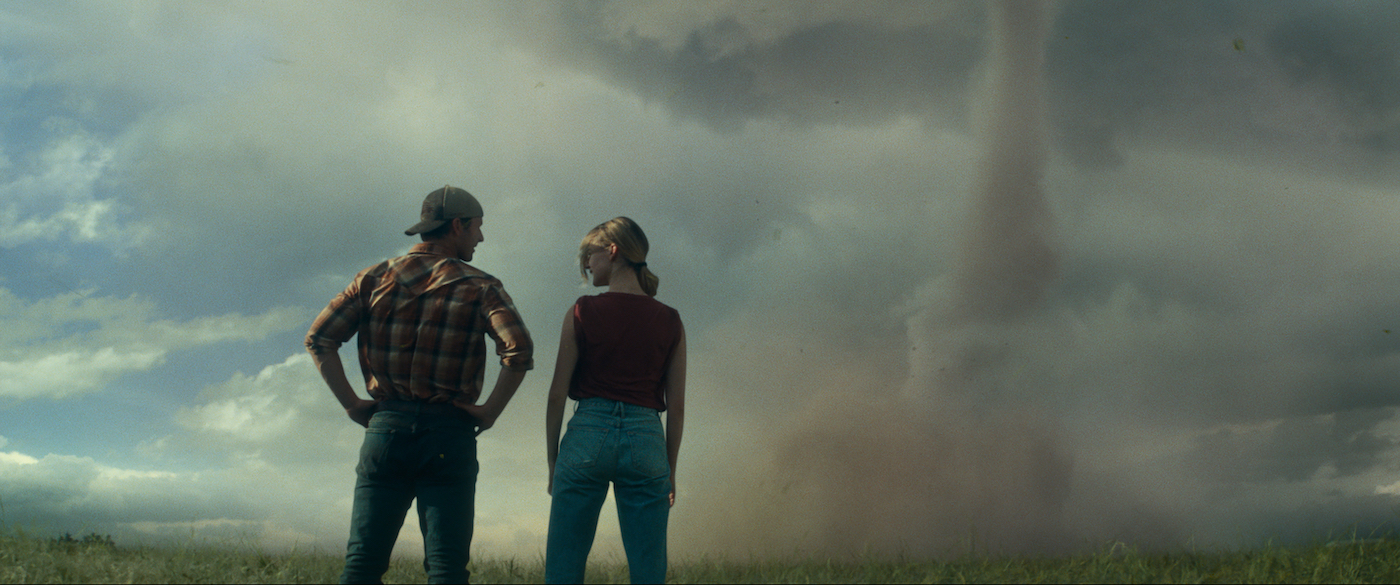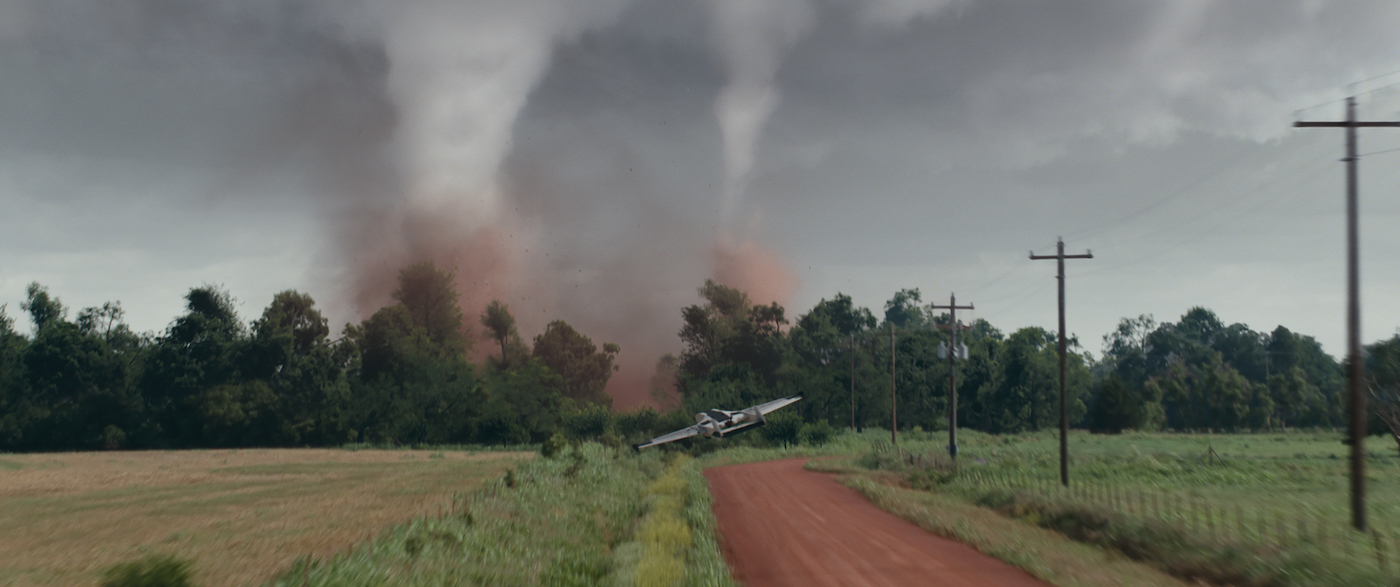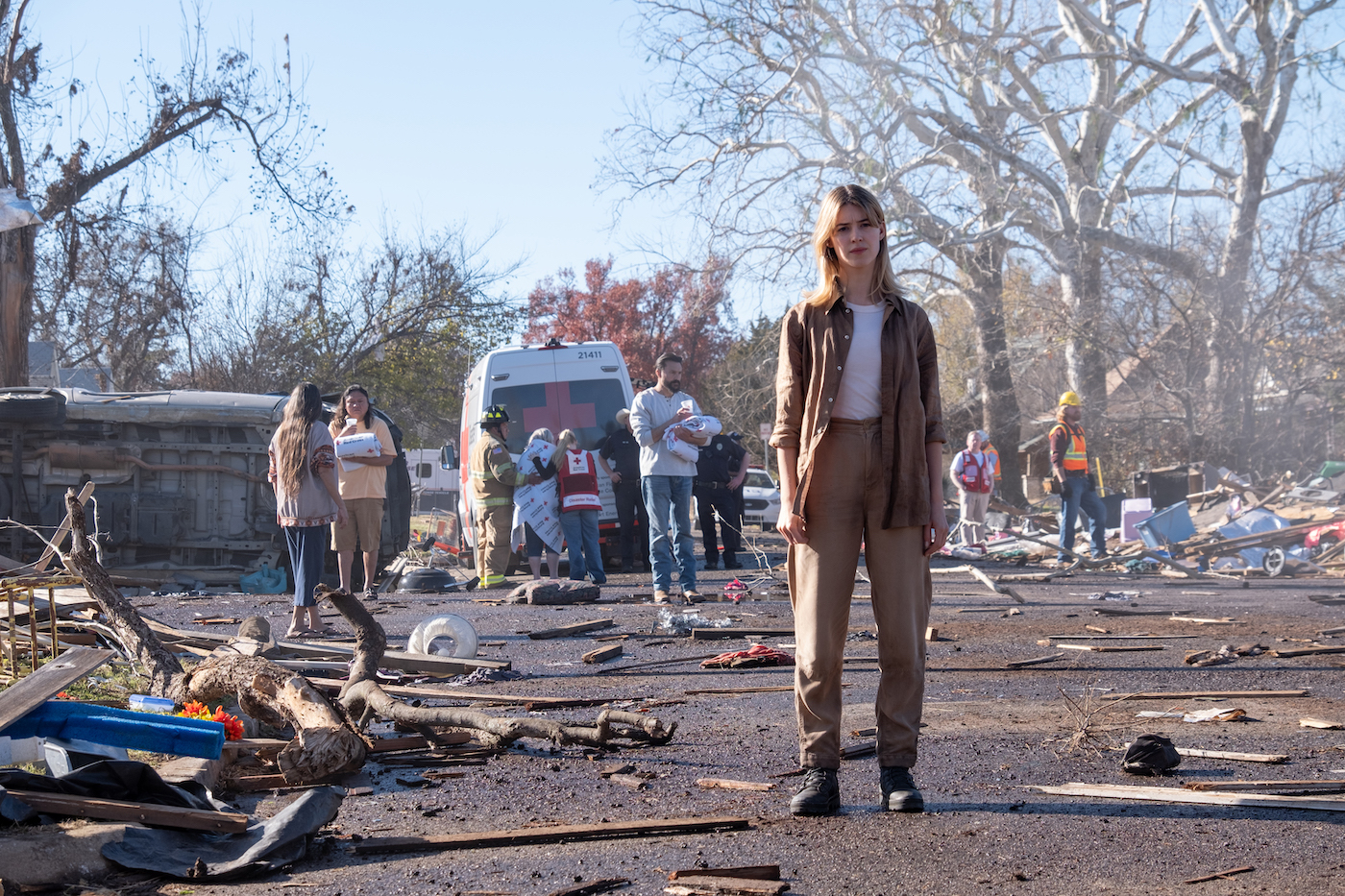‘Twisters’ Highlights The Turbulent Language Of Twin Tornadoes
Comparing clusters of tornadoes is a tricky task for researchers and could affect their ability to predict these superstorms.

Tyler (Glen Powell) and Kate (Daisy Edgar-Jones) in “Twisters,” directed by Lee Isaac Chung. Credit: © Universal Pictures, Warner Bros. Pictures and Amblin Entertainment
 “Twisters,” the much-anticipated follow-up to the 1996 Bill Paxton and Helen Hunt movie “Twister,” is now taking theaters by storm. In this version, the titular tornadoes terrify a new cast: Glen Powell (“Anyone But You”), Daisy Edgar-Jones (“Normal People”), and Anthony Ramos (“Transformers: Rise of the Beasts”).
“Twisters,” the much-anticipated follow-up to the 1996 Bill Paxton and Helen Hunt movie “Twister,” is now taking theaters by storm. In this version, the titular tornadoes terrify a new cast: Glen Powell (“Anyone But You”), Daisy Edgar-Jones (“Normal People”), and Anthony Ramos (“Transformers: Rise of the Beasts”).
The film showcases a variety of these natural hazards, including two tornadoes wreaking havoc simultaneously, and it touches on how scientists don’t always agree on the best ways to research or communicate about tornadoes. With concurrent twisters, these issues get even thornier, making it tough to predict these storms or understand if, and how, they’re shifting with climate change.
Remember in the original “Twister” when a waterspout splits, causing Bill Paxton to cooly say, “We got sisters”? The new film takes a much more enthusiastic approach to its multi-tornado moment, with Brandon Perea’s character shrieking, “WE GOT TWINS!”
Although this weather phenomenon isn’t incredibly common, Dr. Bill Gallus, a meteorology professor at Iowa State University, saw twin tornadoes on a storm chase with his students a few weeks ago. These events, he says, aren’t as scary as they are in the movie.

Gallus says two simultaneously visible tornadoes happen “no more than a handful of times a year,” adding that many “tend to be wimpy looking,” and usually one tornado dries up soon after another appears.
Single tornadoes form when strong thunderstorms happen on days with substantial wind shear, or large changes in wind direction and speed with height. That wind shear can cause a rolling motion, which the up-and-down motion of a storm may tilt into a more vertical rotating motion, which can intensify into a tornado, Gallus said in an email. When multiple tornados drop from a single large storm, some researchers adorably call the group a “tornado family.” Several tornadoes in a cluster, regardless of whether they’re part of the same storm, is called an “outbreak.”
The “Twisters” premise revolves around a “once in a generation” outbreak, but real-life researchers don’t have a consensus on what an outbreak actually is. As extreme weather becomes increasingly unpredictable, how scientists define tornadoes happening in quick succession could change what research tells us about what to expect in the future.
In 2021, Dr. Harold Brooks, a senior research scientist at NOAA’s National Severe Storms Laboratory, co-authored a paper that examined how tornado outbreak definitions have changed since they started appearing in meteorology literature in the 1950s. Analyzing over 200 peer-reviewed publications, the team wrote, “there is no one consistent, unequivocal definition.” Over time, definitions have varied wildly by number of tornadoes touching down in a specific timeframe, the area they affect, and damage done, all depending on what specific questions researchers are asking.
“Is it we’re trying to look at impacts, or are we trying to analyze outbreaks and see how similar they are?” Brooks says. Depending on the answer, “your [definition] might be different.”
Multiple definitions aren’t bad, Brooks adds, but they can create challenges. Paulina Ćwik, a PhD candidate in geography and environmental sustainability at the University of Oklahoma and paper’s first author, began cataloging definitions when she couldn’t nail one down to begin her own research on how climate change affects tornadoes.

She turned to the Enhanced Fujita (EF) Scale—a tool that rates tornadoes based on estimated wind speed and damage caused. The scale misses countless tornadoes that pass without incident, but it’s the most historically consistent measure of tornado severity that researchers have. For her work, Ćwik defined an outbreak as seven tornadoes with a rating of EF2 or higher occurring in a given area within 24 hours. She says that as tornado data and knowledge evolved, definitions did too, leading to inconsistencies in records. And that makes it difficult to compare outbreaks over time, and hence to track tornado patterns, or develop forecasting and warning systems.
That’s a big problem, especially because tornadoes have occurred in aggressive clusters throughout 2024, and some hotspots are migrating towards more populated areas. Researchers don’t know if climate change is the culprit, but clearly outlining an outbreak definition for each unique study could be key to learning how these storms are evolving and how to protect more people from them.
“Twisters” has delightfully nerdy tornado jargon, and the incredible storm visuals and sound design made my heart pound. However, the story and the characters are one-dimensional and awkward. I longed for the days of Helen Hunt and Bill Paxton—the new cast seemed so young and glossy, I hoped at least one grizzled old scientist would show up, but they never did. I’d recommend it if you’re interested in disaster movies, but don’t expect too many profound ponderings about love to follow you out of the theater.
“Twisters” is in theaters now.
Emma Lee Gometz is Science Friday’s Digital Producer of Engagement. She’s a writer and illustrator who loves drawing primates and tending to her coping mechanisms like G-d to the garden of Eden.